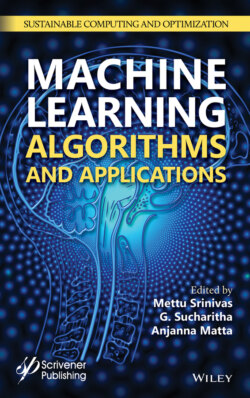Читать книгу Machine Learning Algorithms and Applications - Группа авторов - Страница 18
1.2 Literature Survey
ОглавлениеAir pollution occurs when particulates (pm2.5 and pm10), biological molecules, and other harmful substances are introduced into Earth’s atmosphere. Natural processes and human activities can both generate air pollution. Air pollution can be further classified into two sections: visible air pollution and invisible air pollution.
Proactive monitoring and control of our natural and built environments is important in various application scenarios. Semantic Sensor Web technologies have been well researched and used for environmental monitoring applications to expose sensor data for analysis in order to provide responsive actions in situations of interest [2]. A sliding window approach that employs the Multilayer Perceptron model to predict short-term PM 2.5 pollution situations is integrated into the proactive monitoring and control framework [2]. Time series data in practical applications always contain missing values due to sensor malfunction, network failure, outliers, etc. [3]. A spatiotemporal prediction framework based on missing value processing algorithms and deep recurrent neural network (DRNN) has been proposed [3]. A generic methodology for weather forecasting is proposed by the help of incremental K-means clustering algorithm in [4]. Air pollution data are available to the public as numeric values on the concentration of pollutants in the air on a web page [5, 6]. The numeric information is not conducive to determining the air pollution level intuitively [6]. To address this problem, the study developed and implemented a program for visualizing the air pollution level for six pollutants by obtaining real-time air pollution data using API and generating a keyhole markup language (KML) file defined to visualize the data on Google Earth intuitively [6]. Visualization method is intuitive and reliable through data quality checking and information sharing with multi-perspective air pollution graphs [7]. This method allows the data to be easily understood by the public and inspire or aid further studies in other fields [7]. As the tools are invented using spatial-temporal visualization and visual analytics for general visualization purposes of geo-referenced time series data of air quality and environmental data, they can be applied to other environmental monitoring data (temperature, precipitation, etc.) through some configurations [8].
According to a survey mentioned in [9], pollution levels in many cities across the country reduced down drastically only after a few days of imposing lockdown. Also, as discussed in the study [10], lockdown could be the effective alternative measure to be implemented for controlling air pollution.
The results above show us that all these machine learning techniques can be used for prediction and evaluating air pollution thereafter. Implementation details are described in the next section.
